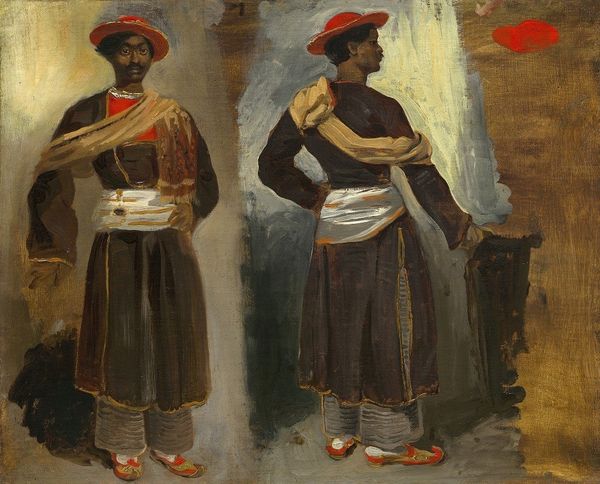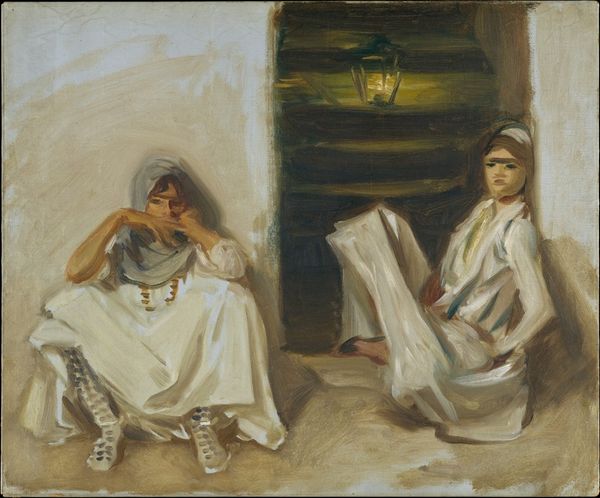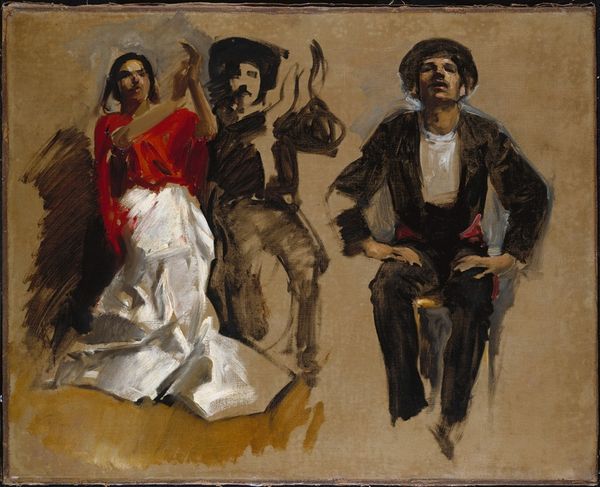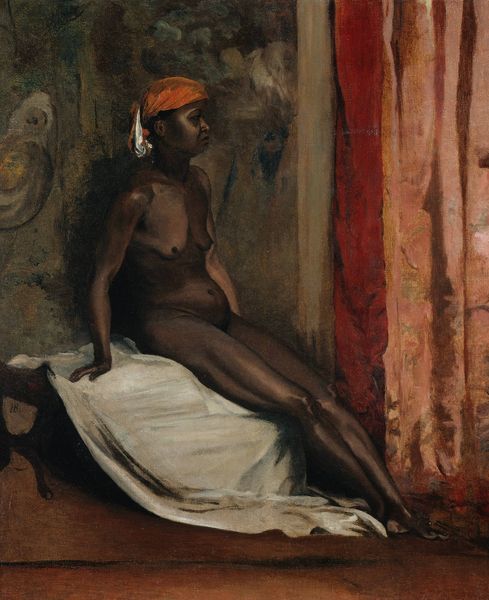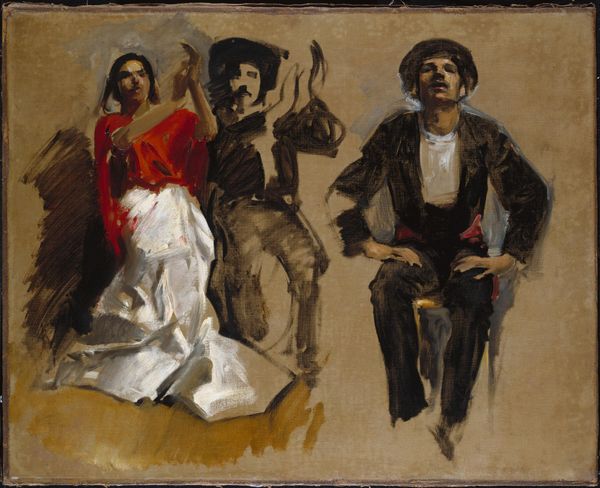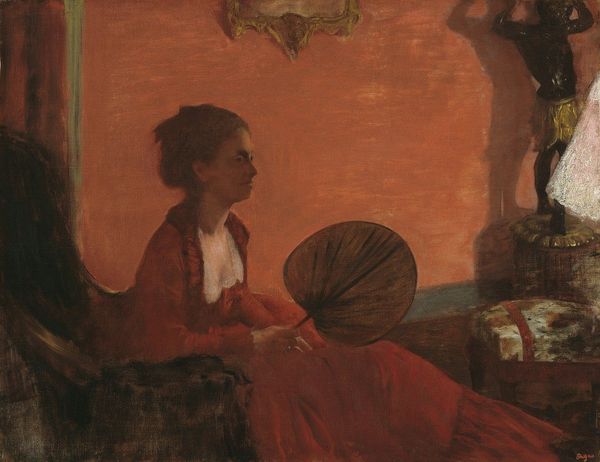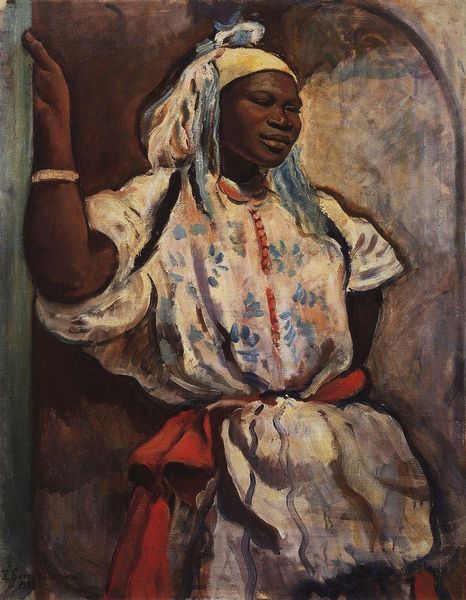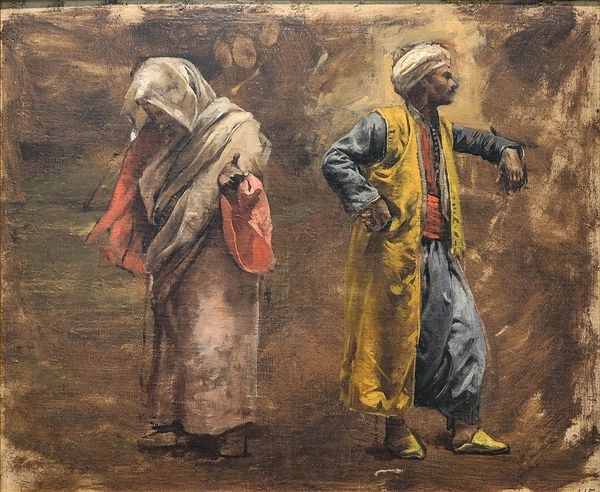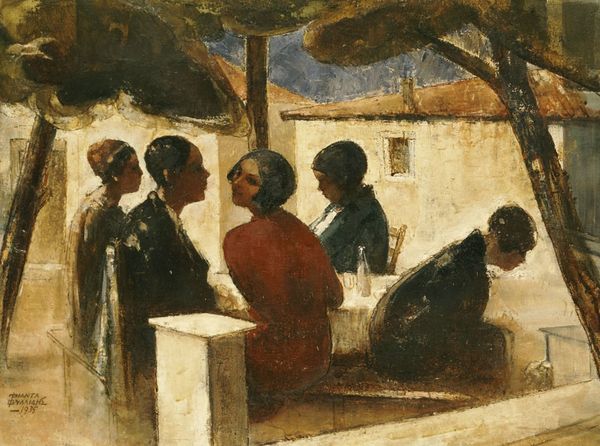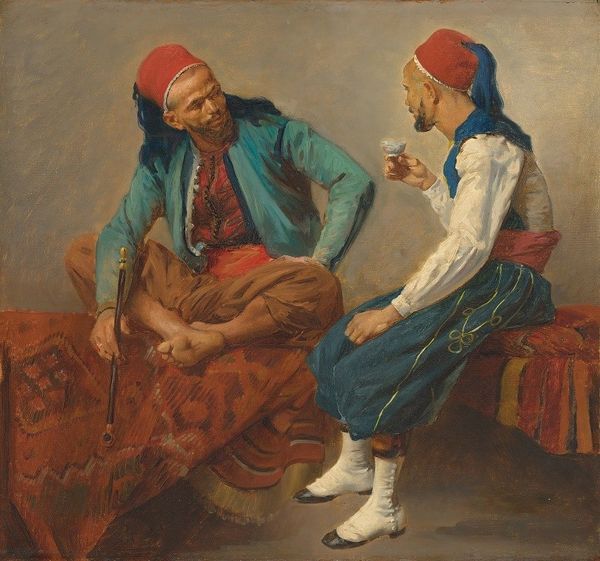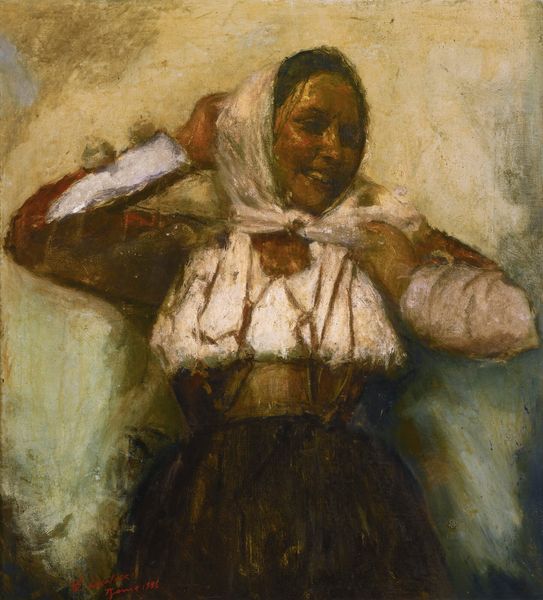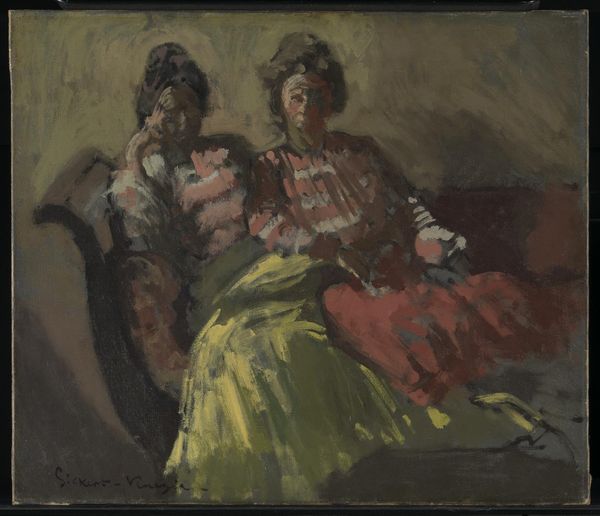
Two Views of an Indian from Calcutta, Seated and Standing 1824
0:00
0:00
eugenedelacroix
Private Collection
painting, oil-paint
#
portrait
#
painting
#
oil-paint
#
oil painting
#
romanticism
#
orientalism
#
genre-painting
Dimensions: 37.5 x 45.7 cm
Copyright: Public domain
Editor: Here we have Eugène Delacroix's "Two Views of an Indian from Calcutta, Seated and Standing," an oil painting from 1824. I’m immediately struck by the contrast between the active and passive poses. How do you interpret this work? Curator: This painting is an important document of the Orientalist movement, revealing the complicated power dynamics at play during that period. Delacroix, a prominent figure in French Romanticism, never actually visited India. Therefore, his work speaks less about the reality of Indian life and more about the European fascination with the "exotic" East, built on colonial narratives. Editor: So the "Indian" in the title doesn't necessarily represent an accurate portrayal? Curator: Precisely. We must ask, who is the subject of this painting really? Is it the individuals depicted, or is it the Western gaze itself? The very act of "viewing" and categorizing becomes a form of control. Think about the social context: France was expanding its colonial power, and these images helped to construct a particular image of the "other" to justify that power. Editor: The man standing seems almost staged, a figure frozen in time... Curator: Consider how their clothing, the "Indian" attire, is presented. Is it authentic, or a romanticized version? The romantic idealization obscures the complexities and diversities within Indian culture. Also, the choice of Calcutta, a major colonial center, highlights the connection between artistic representation and colonial administration. It is essential to confront the ways in which art participated in and reinforced these problematic narratives. Editor: This really shifts my perspective. I’ll never see these "orientalist" paintings the same way. Curator: Exactly, and remember, confronting art history in relation to social context will make you question what you always thought you knew.
Comments
No comments
Be the first to comment and join the conversation on the ultimate creative platform.
